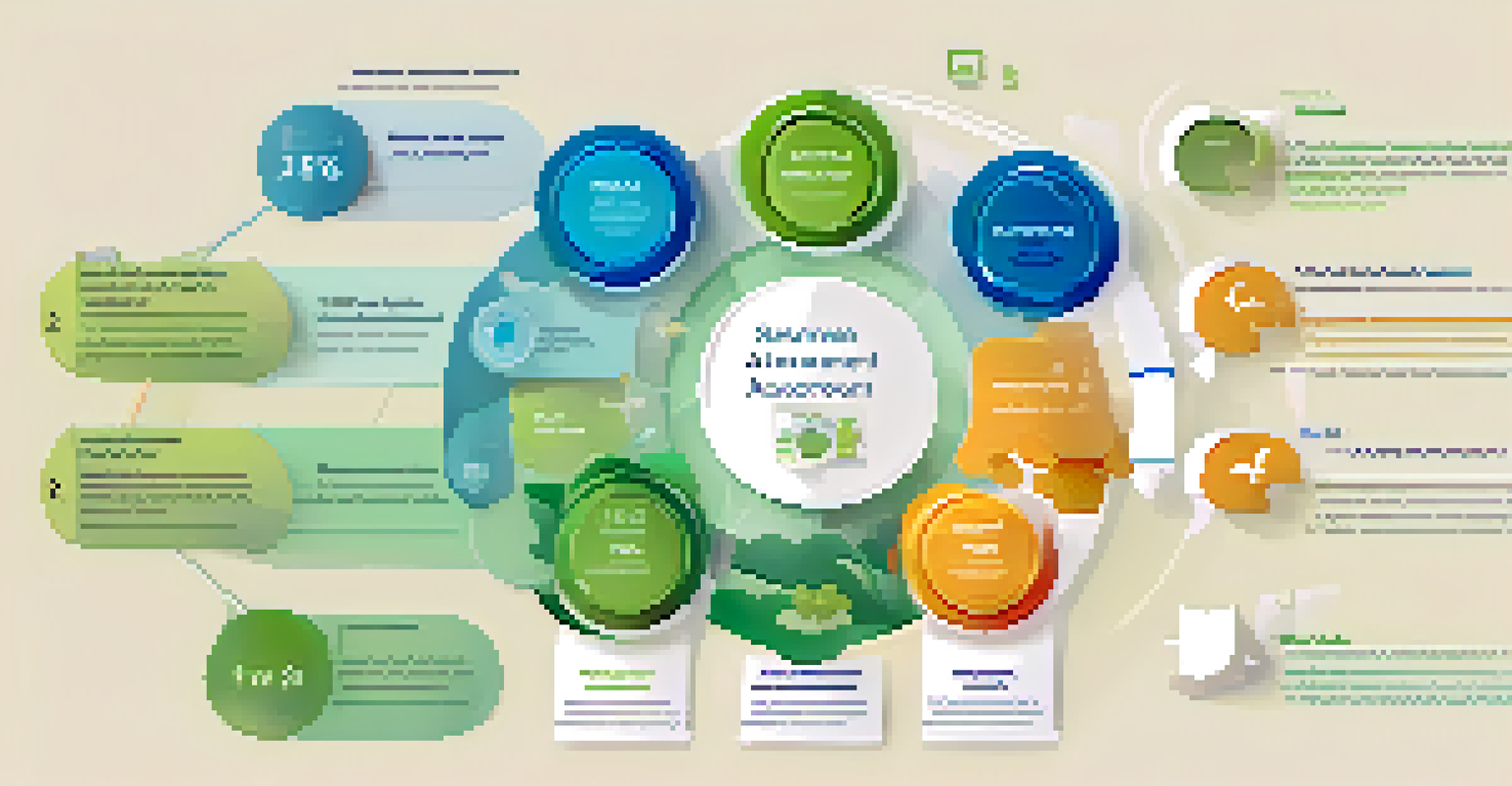What You Need to Know About Retirement Account Rollovers

Understanding Retirement Account Rollovers: What Are They?
A retirement account rollover occurs when you transfer funds from one retirement account to another. This often happens when you switch jobs or want to consolidate your accounts for simplicity. The goal is to maintain the tax-deferred status of your savings, allowing you to keep growing your investments without immediate tax consequences.
The best time to plant a tree was twenty years ago. The second best time is now.
For instance, if you leave your job and have a 401(k), you might decide to roll it into an IRA. This move not only preserves your retirement savings but also opens up more investment options. Understanding this process is crucial for managing your retirement funds effectively.
Essentially, rollovers can help you avoid penalties and taxes, ensuring that your hard-earned money continues to work for you. It's a strategic move that can make a significant difference in your retirement planning.
Types of Retirement Accounts You Can Rollover
There are several types of retirement accounts eligible for rollovers, including 401(k)s, 403(b)s, and traditional IRAs. Each of these accounts has specific rules, but the underlying principle remains the same: transferring funds without incurring taxes. Knowing which accounts you can roll over helps you make informed decisions about your retirement savings.

For example, if you have a 401(k) from a previous employer, you can typically roll that over into a new employer's 401(k) or an IRA. This flexibility allows you to manage your portfolio better and potentially lower your fees. Understanding the specifics of each account type is essential for maximizing your retirement savings.
Additionally, rollover options may vary based on your age and the type of account, so it’s important to research or consult a financial advisor. This knowledge empowers you to choose the right path for your financial future.
The Rollover Process: Step-by-Step Guide
Rolling over your retirement account might sound daunting, but it can be a straightforward process if you break it down into steps. First, you’ll want to decide where you want to transfer your funds—whether it's to another employer's plan or an IRA. Next, initiate the rollover by contacting your current and future account providers to understand their requirements.
It's not about having the right opportunities. It's about handling the opportunities right.
Once you have the necessary information, you can request a direct rollover, which transfers funds directly from one account to another. This method minimizes the risk of taxes and penalties, as the money never touches your hands. Remember to keep records of the transaction for tax purposes.
Finally, once the funds are in your new account, review your investment options to ensure they align with your retirement goals. This proactive approach helps keep your retirement plan on track.
Tax Implications You Should Be Aware Of
When it comes to rollovers, understanding tax implications is critical. If you do a direct rollover, you generally won't face immediate tax consequences. However, if you withdraw the funds and then deposit them into another account, you have 60 days to complete the transfer to avoid taxes and penalties.
For instance, failing to complete the rollover within the given timeframe may lead to your withdrawal being taxed as regular income, which could significantly reduce your savings. It’s essential to be mindful of these rules to ensure you're making the most of your retirement funds.
Additionally, different types of accounts may have different tax treatments, so consulting a tax professional can provide clarity. This knowledge helps you avoid surprises when tax season rolls around.
Common Mistakes to Avoid During Rollovers
One of the most common mistakes individuals make during rollovers is failing to research their options thoroughly. Not understanding the differences between accounts, fees, and investment choices can lead to poor decisions that may affect your retirement savings. Taking the time to educate yourself can save you from costly errors.
Another common pitfall is not completing the rollover within the specified time frame. As mentioned earlier, missing the 60-day window can result in significant tax penalties. Staying organized and keeping track of deadlines is crucial to ensure a smooth rollover process.
Lastly, some people underestimate the importance of seeking professional advice. A financial advisor can provide personalized insights and help you navigate the complexities of retirement planning, ultimately setting you up for a more secure future.
Pros and Cons of Retirement Account Rollovers
Like any financial decision, rollovers come with their own set of pros and cons. On the positive side, consolidating multiple accounts can simplify your financial life and make it easier to manage your investments. Additionally, rolling over to an IRA often provides a wider range of investment options and potentially lower fees.
On the flip side, there can be downsides as well. For example, if you roll over to an IRA, you may lose certain benefits associated with your employer-sponsored plan, such as loan options or specific investment choices. It's important to weigh these factors carefully before making a decision.
Ultimately, understanding both sides can help you determine whether a rollover aligns with your financial goals. This balanced perspective is essential for making informed choices about your retirement savings.
When to Consider a Rollover: Key Indicators
There are several indicators that it might be time to consider a rollover. If you’ve changed jobs or retired, this is often the first sign that your retirement accounts need to be consolidated. Having multiple accounts can lead to confusion and make it harder to keep track of your investments.
Additionally, if you’re unhappy with your current investment options or fees, rolling over to a different account might provide better choices. For instance, if your former employer's plan has high fees or limited investment options, exploring an IRA could be beneficial.

Lastly, if you're nearing retirement age, consolidating accounts can help streamline your financial planning. This clarity can lead to more effective strategies for drawing down your retirement savings later on.